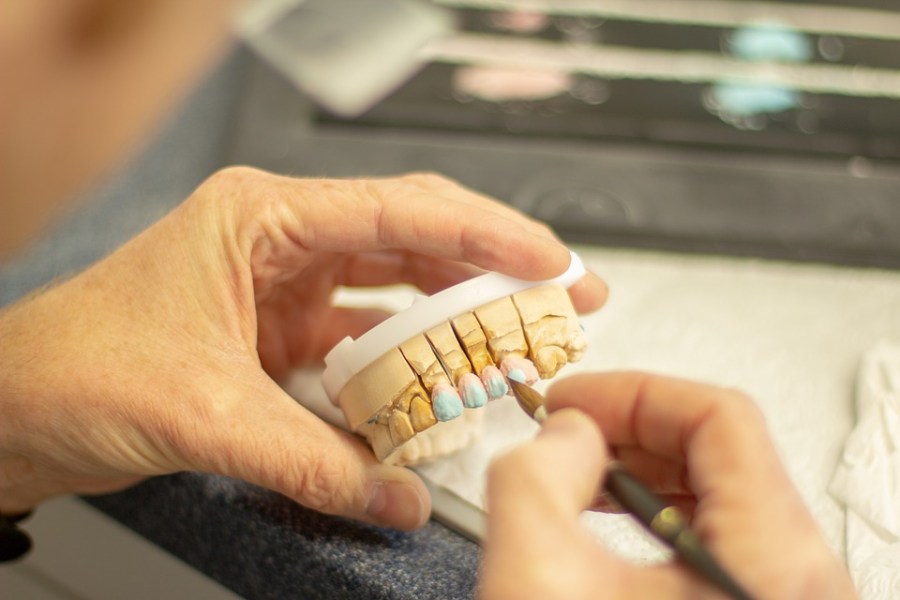
Having missing teeth can change everything from the way you eat to the way you feel about your smile. Large gaps in your bite can also cause your teeth to shift, altering the way they line up — and look — in the process. If you want to restore your smile back to something you’re more comfortable with, consider dental implants. These prosthetic teeth can be a durable, long-term solution for improving your oral health.
What Are Dental Implants?
Unlike veneers or caps, which primarily create cosmetic changes above your gum line, dental implants serve as replacements for entire teeth. If you’ve had any teeth removed down to the roots, implants can fit in their places. Each implant comprises three separate parts:
The implant screw serves as the prosthetic tooth’s new root. Over time, the bone in your jaw grows up around it, which is one reason why dental implants are considered permanent. The crown is the part of the prosthetic tooth that’s visible next to your normal teeth. Your dental surgeon can design it to match the general tone and shape of your other teeth so it looks natural. The abutment holds the crown and sits inside the implant screw. The oral surgeon can remove this and the crown if necessary for repairs or replacement, but otherwise it stays in place.
You can have just one implant added if you’re only replacing one tooth. If you need multiple teeth next to each other or a full row of your upper or lower teeth replaced, dentists can also use implant screws to anchor these larger sets.
Benefits of Dental Implants
Are dental implants right for you? They are for the approximately 500,000 people each year who have them installed, according to the American Academy of Implant Dentistry. Still, it’s important to consider the pros and cons as you begin discussing your options with your dentist. Benefits of dental implants include the following:
Once healed, implants are virtually as secure as your natural teeth. They’re easier to speak and eat with than dentures are. They prevent your face from changing shape like it would if your teeth were to shift. Implants are easy to keep clean and don’t require different care than your natural teeth — if you take good care of them, they can last you for life. Implants can help you feel more confident about your appearance.
Drawbacks of Dental Implants
There are some situations in which dental implants might not be an ideal solution. For example, if you have certain chronic diseases or grind your teeth, implants might not work out. Implants aren’t appropriate for younger teens whose jaws aren’t done growing, either. Consider these drawbacks before you decide to undergo the process:
It can take a long time — sometimes up to 18 months, depending on your overall health — for the screw site to heal before the dentist can add the crown. Many dental insurance plans don’t cover implants, and each implant can cost between $3,000 and $4,500, notes the American Academy of Implant Dentistry. As you age, the bones around the implant can recede, which means you’ll need to have the implants replaced.
Setting Dental Implants
From start to finish, the setting and healing processes for dental implants can take six months or longer. Initially, your oral surgeon installs the implant screw into your gums during an office visit. Each screw goes into the same socket where you once had a tooth. You’ll be under local anesthesia, so you’ll be slightly awake but won’t be able to feel the surgery. Once installed, the screw then needs a few months to heal. During this time, your jawbone starts growing around the outside of the screw post. This process is called osseointegration, and it’s what holds the screw in place so well.
Placing the Crowns
While your implant screw heals, your dentist or oral surgeon starts creating the crown for your new prosthetic tooth. These crowns are often made of porcelain or a material called zirconium, which is a metal that’s similar to ceramics. When the screw has healed and the crown is ready, the surgeon uncovers the top of the screw and installs the abutment with a small torque wrench to secure it tightly. Then, he or she installs the crown on top of the abutment. Many dental implant patients report that their pain is minimal, and you can typically relieve any discomfort you feel by taking over-the-counter pain relievers. Eat soft foods for a few days until any lingering irritation fades away.
Taking Care of Your Implants
If you don’t already take good care of your teeth, it’s essential that you create healthy oral hygiene habits in preparation for your dental implants. Fortunately, implants don’t need much beyond the dentist-recommended routine you do for your normal teeth. If you currently brush twice a day and floss at least once a day, you’re already on the right track. Pick up a soft-bristle toothbrush; it’ll be easier on your gums and the implant. Start seeing your dentist for cleanings every six months, too. During your cleanings, the dental hygienist will use special resin tools to clean around your implant; the metal tools that work on your natural teeth can scratch the crown. Once your implant has healed it can last for years, and it’s important that you take great care of this investment in your health and well-being.





